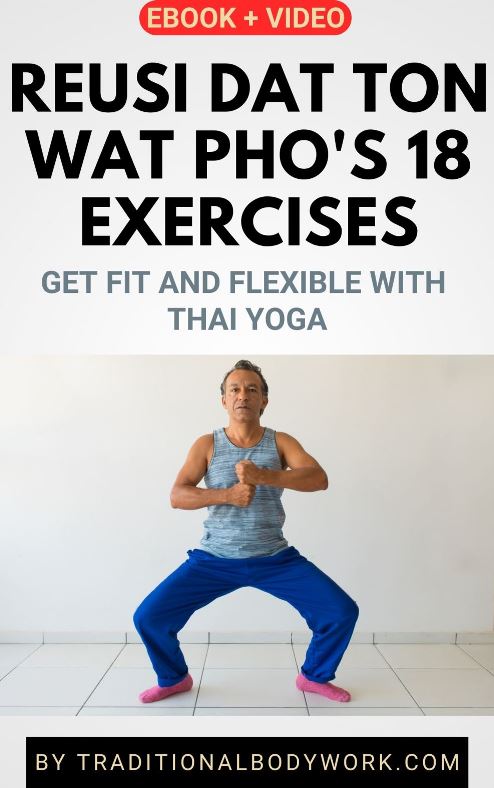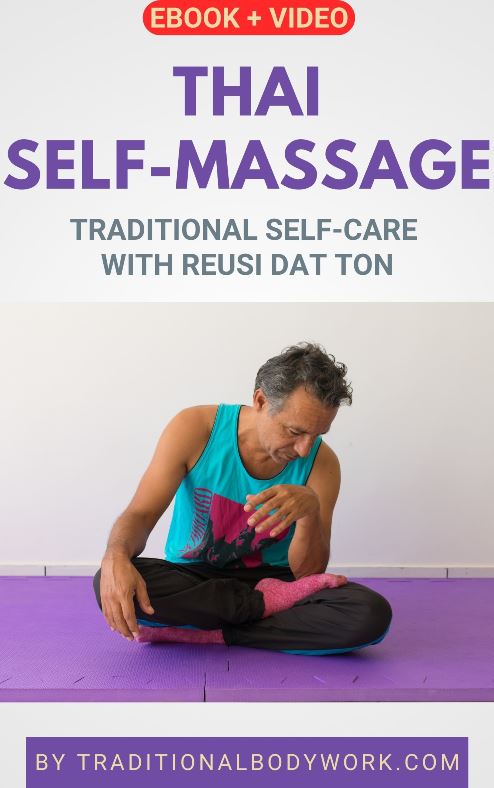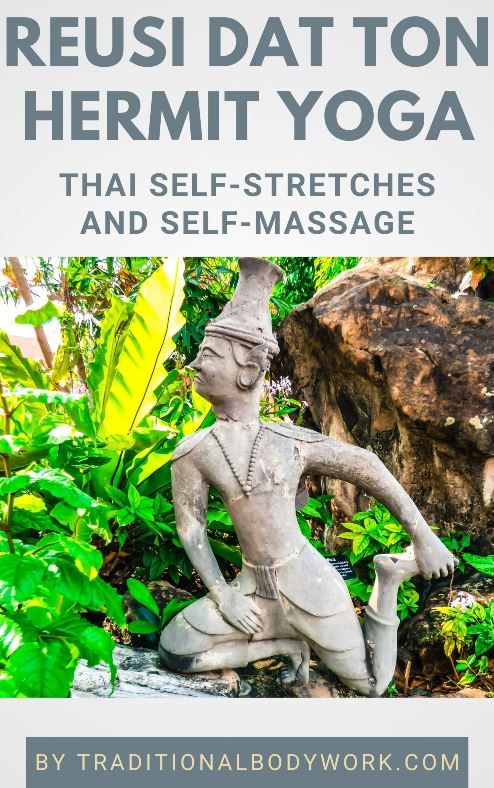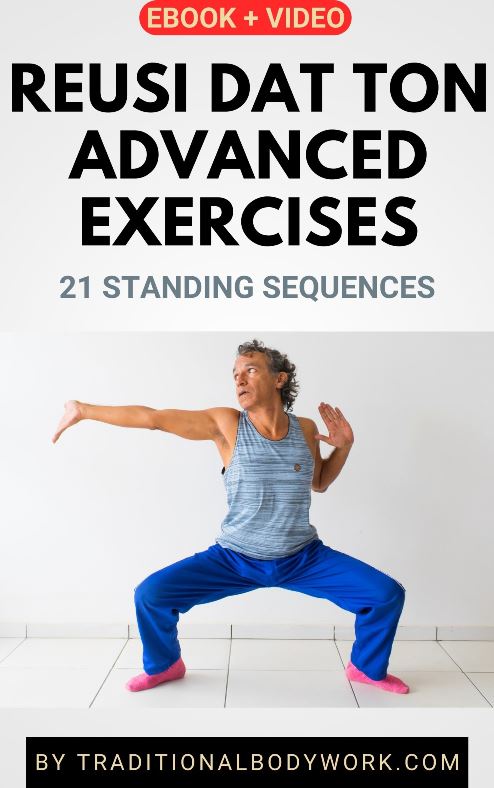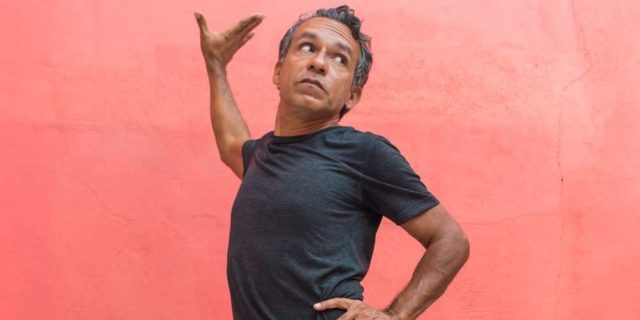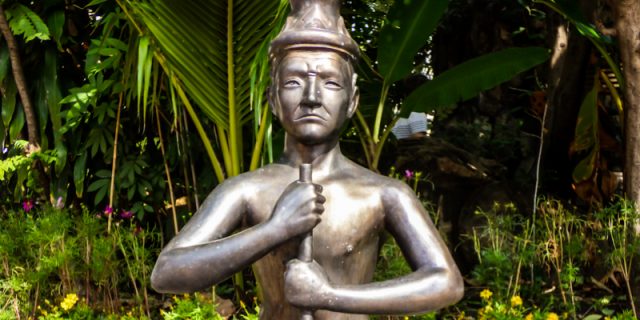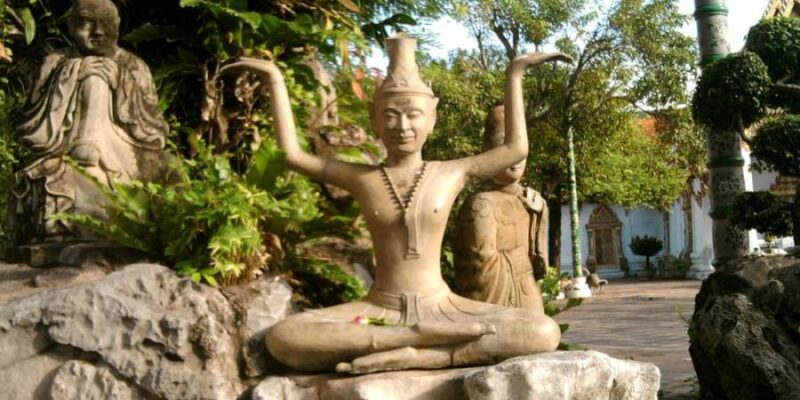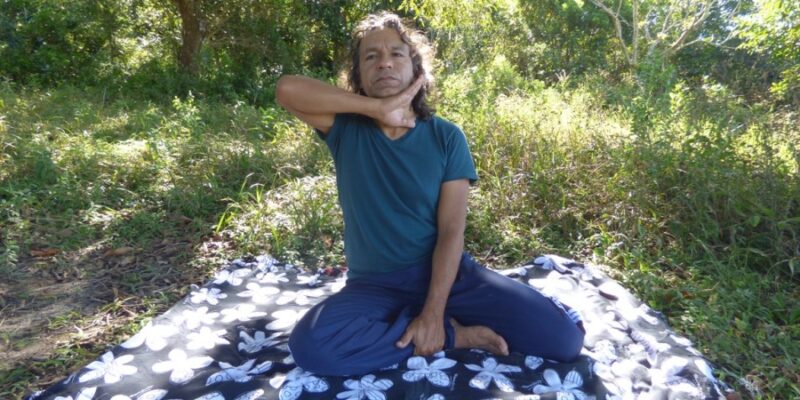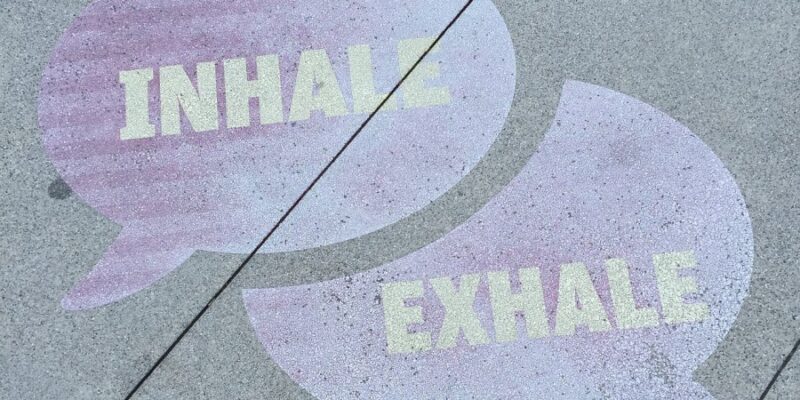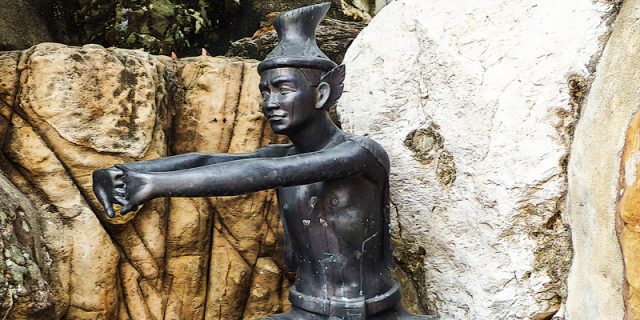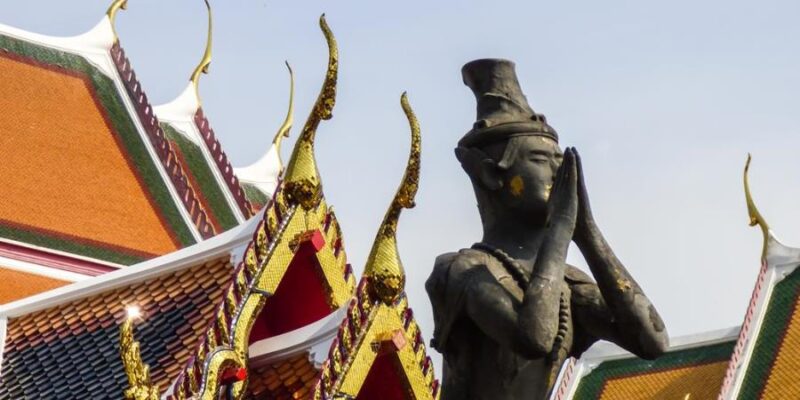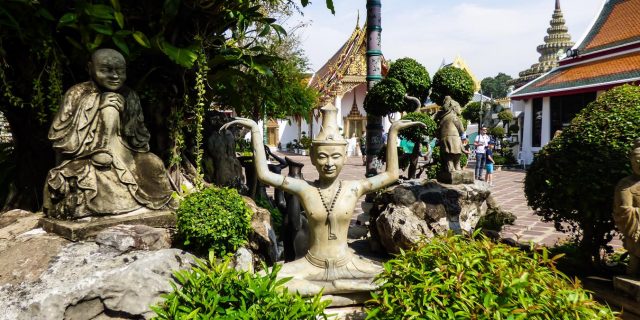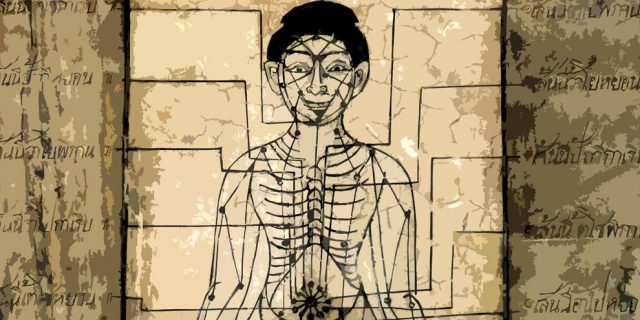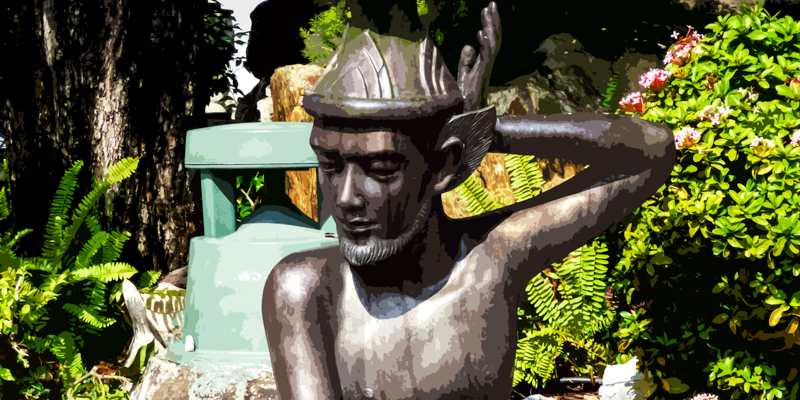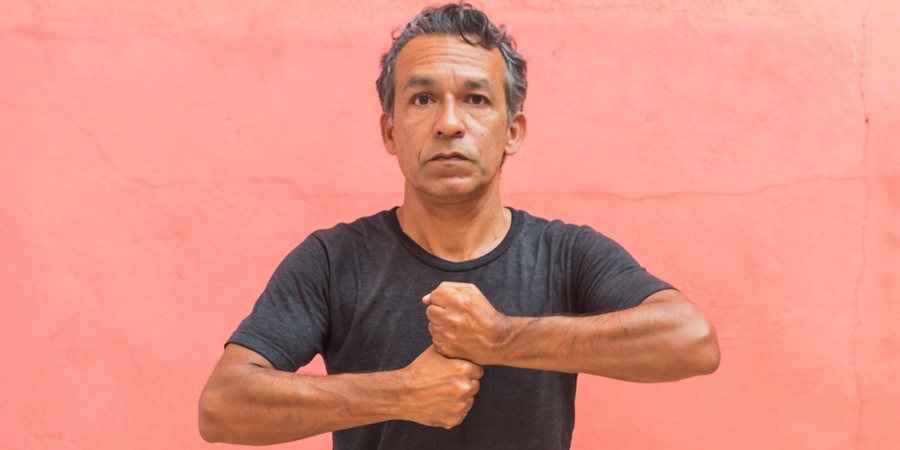
One of the characteristics and goals of Rusie Datton (Thai Traditional Yoga) is that you also build up strength, that is, you don’t only become more flexible, but also stronger. It’s something often not taught by trainers or thought about but nevertheless a key feature of doing Thai Yoga.
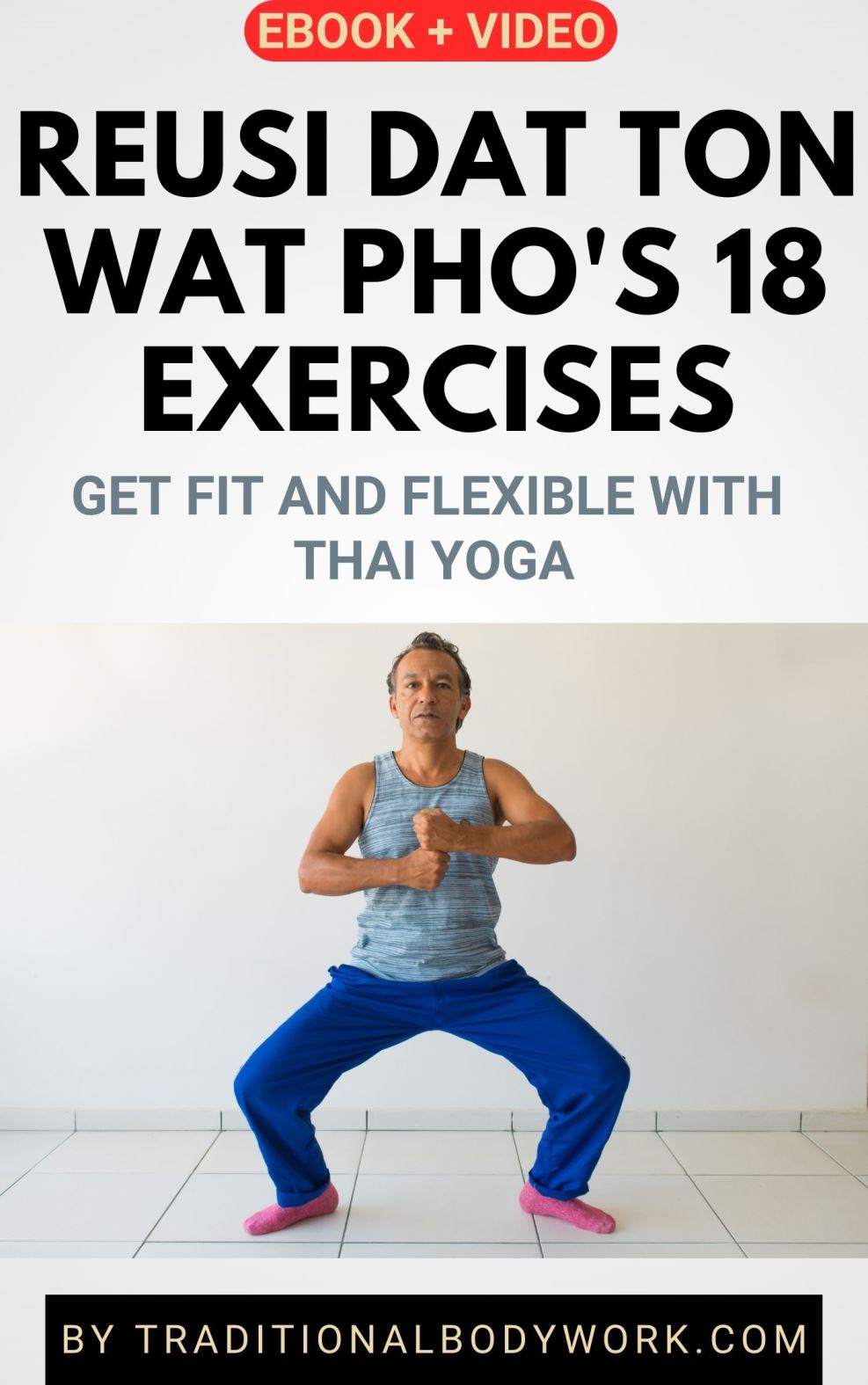
You will see that a number of exercises in Reusi Datton have a double working, notably the exercises done at both sides of the body (left and right), but also some other exercises.
What happens when doing an exercise, is that, for instance, the left part of the body stretches (for relaxation and improving flexibility) and the right part strengthens, and vice versa when you do the exercise the other way around.
Another example is when putting your hands in praying position pressing the palms together (part of the Wai greeting in Thailand and often done in Reusi Datton exercises), you can do that with or without power.
Doing it with power will strengthen the forearm muscles and wrists. Doing it without power will do “nothing” in the “strengthening field.” The latter, by the way, is how the Wat Pho teachers teach the exercises (no power used).
So anything you do in Reusi Dat Ton can be done with using power (or without). Like when pressing the palms, stretching the arms, legs or other body parts in maximum range of motion, bending the knees deeper while squatting (strengthening the quadriceps), pushing firmer on the thighs, and so on.
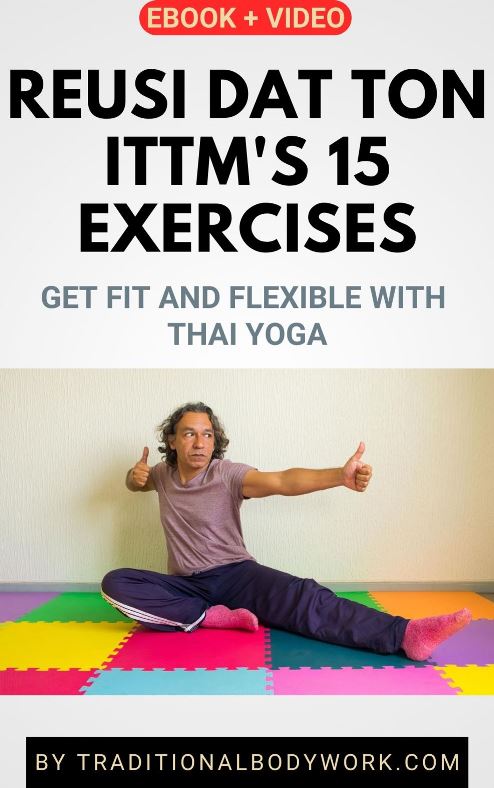
What is more, those Reusi Datton exercises that incorporate self-massage need power, that is, firm rubbing, kneading, and pressing. Unfortunately, you see a lot of teachers just showing light strokes when teaching those kinds of exercises.
Because you see, let’s remember what massage is—sustained, firm pressure opening up all bodily soft tissue which includes muscles, tendons, ligaments, nerves, fibrous tissues, fascia, blood vessels, fat, and synovial membranes.
Now, of course, you can decide yourself how you want to do the exercises. Perhaps in the beginning it’s all too much: coordinating the movements and poses, breathing technique, using power, and holding your equilibrium.
I suggest to just take it one step at a time. Finally you will be able to do all things together when doing an exercise and benefit more by doing them with power and building strength.


